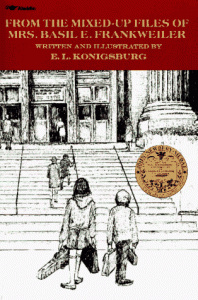I believe in careful planning. I plan out my year, my units, and my lessons well in advance. After I do all that, I give myself permission to deviate from the plans in accordance with the needs of my class.
The other day, I was reading The Mixed-up Files of Mrs. Basil E. Frankweiler to my class. From the looks on their faces and the questions they asked, I realized they were not following well–mostly because they were not visualizing the scenes as they took place. I teach in an International school and many of my students are ELLs.
The Mixed-up Files has two main characters with many passages of pure dialogue punctuated with minor description.
I asked one of my students, who is an excellent reader, to try something with me, and we read a portion of chapter one where Claudia is trying to convince her younger brother, Jamie, to run away with her. We modeled reading just the dialogue, but acting out the descriptive parts. Then I divided the class into pairs and each pair read the section. They really seemed to get a glimpse into the characters, plus understood the story better as they visualized while acting it out. It was good fluency practice, too.
We’ve continued doing this at the end of each chapter. The students loved it, and I can circulate and take informal notes on who needs more fluency practice. At the end of the book, we’re going to put together a presentation with each pair reading a portion of the book. This works well with my goals in independent reading where we are working on how authors introduce and develop characters. At the same time we can work on fluency and visualization–both important skills.
Photo credit: dicampbell.files.wordpress.com/2009/06/basilb…
